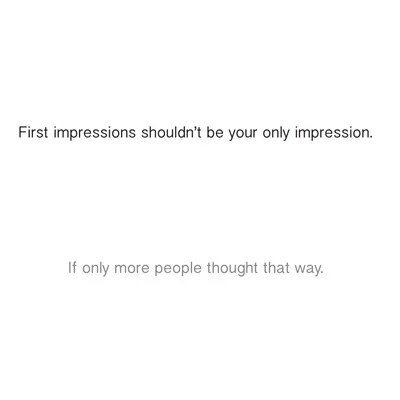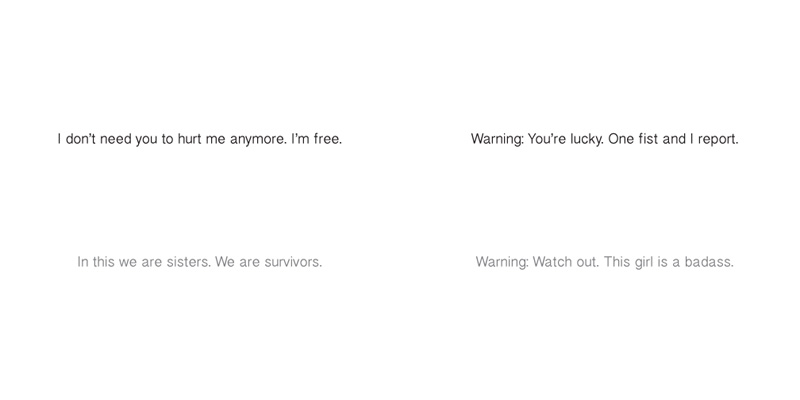Jan Estep, Say Something, 2014, artist book, paperback, perfect bound, two-color cover, black-and-white inside, digitally printed, 26 pages, 7" x 7".
Say Something
This project arose in a freshman seminar course called Art and Language that I taught at the University of Minnesota, Twin Cities, Fall 2014. In coming up with the idea for the piece, the group early on spoke about stereotypes we've encountered, and our experience running into gendered language and expectations. Slowly we broadened the discussion to include the power of sharing secrets and personal fears, saying something you need to get off your chest under the protection of relative anonymity. On the other side is the feeling of listening and connecting deeply to other people's stories, taking them on as your own with empathy and an open heart, and the value of acknowledging the universal nature of our individual experiences. We shared the writing first in a group performance and then in this book.
The writing was born from a multi-part creative exchange. Each participant wrote a short six-to-ten-word phrase to commemorate a personal thought or experience. To give context and accompany the phrase each person also wrote a 100-word text providing background information, whatever they wanted to add. Everyone understood that only one other person would read the background texts (whoever inherited it) while the short phrases would be shared anonymously with the full group. The writings were printed and left unsigned. We then ritualistically crumpled our printouts into a ball and threw them into the middle of the room, mixing them to ensure we did not select our own. Afterwards we each picked up a paper ball, stood in a circle, and read the words in silence. We thereby redistributed the writings within the group and adopted another's story.
Prior to the performance each person reflected on their inherited phrase and wrote a short six-to-ten-word response phrase. Both sets of phrases were formally recited in a live event on November 21, 2014, the powerful, emotionally laden writing infusing the space. The book was printed shortly thereafter to document our words. In the book, each page includes a pair of short phrases: an original phrase and a response phrase. They are edited to create a soft through-line when reading them.
The vulnerability expressed in the writing is tangible, as is the compassion felt for one another within the group. It takes courage to share something that one has kept private, to risk judgment and misunderstanding or rejection. But that vulnerability can lead to greater self-acceptance and a stronger sense of connection. Language within the shared space of art becomes a way to explore our sense of self, our social relationships, and the culture we build collectively. The project is a reminder of the way creative expression impacts our hearts, minds, and bodies.











